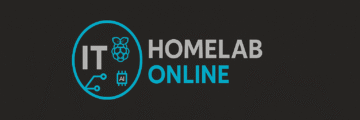In today’s tutorial, I’m going to show you how to create a multi-boot USB disk using VHDX files. This method lets you run multiple operating systems from a single external USB drive — giving you flexibility, portability, and efficiency without the need for multiple USB sticks.
Why Multi-Boot USB?
I use multi-boot USB disks every day. They allow me to carry several operating systems with me wherever I go.
- In the past, I was limited to just one or two bootable USB drives due to cost and reliability issues.
- Now, I typically keep 3–4 OS installs on one drive, and on another I currently run eight operating systems side by side.
What You’ll Need
A working computer (USB-C recommended)
An external NVMe drive + enclosure
Main setup: Samsung 990 PRO 1TB NVMe + Yottamaster M.2 NVMe SATA Enclosure
Demo setup: 256GB NVMe in an unbranded enclosure
Step 1 – Prepare the Drive with DiskPart
list disk
select disk 1
clean
convert gpt
create partition EFI size=200
format quick fs=fat32
create partition primary
format fs=ntfs quick
assign letter=Y:Step 2 – Create a VHDX File
create vdisk file="D:\!BootVHDX\Main.VHDX" type=expandable maximum=20480
attach vdisk
create partition primary
format fs=ntfs quick
assign letter=X:Step 3 – Apply the Operating System
Dism /Get-WimInfo /WimFile=E:\sources\install.wim
dism /apply-image /imagefile=E:\sources\install.wim /index:6 /applydir=X:\
bcdboot X:\Windows /s Y:
bcdedit /store Y:\EFI\Microsoft\Boot\BCD /set {default} description "Main"Step 4 – Make a Master Copy
Create a Masters folder in your !BootVHDX directory. Copy your base VHDX file here so you can reuse it for new setups.
Step 5 – Boot from USB
- Reboot your system.
- Press F12 (or your system’s Boot Menu key).
- Select your USB enclosure.
- Boot into your new OS, install apps, and enjoy your portable system!
Final Thoughts
With this setup, you can carry multiple operating systems on a single USB drive and even use part of the disk for storage. It’s cost-effective, reliable, and flexible for IT pros and enthusiasts alike.
